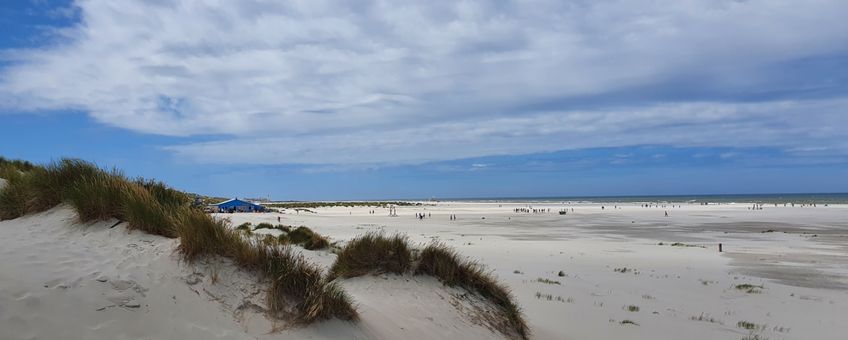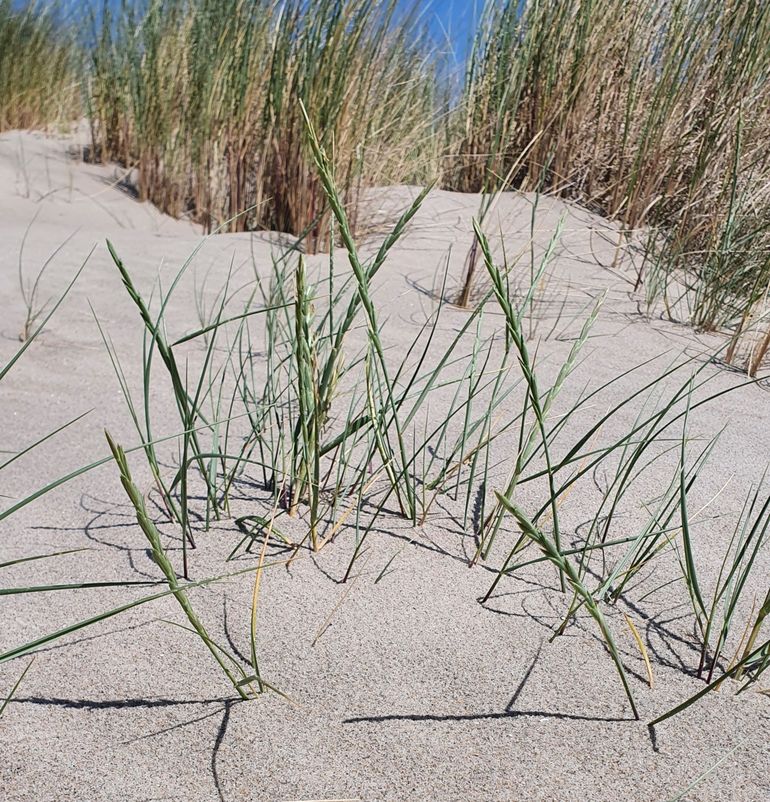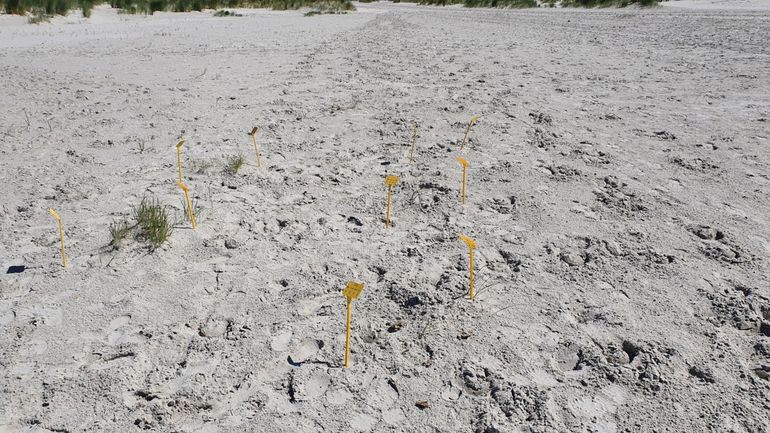
Leave nothing but footprints: is this enough to preserve the dunes?
Wageningen Environmental Research, Wageningen University & ResearchDune formation begins with plants
Plants are essential in the formation of dunes, making them key players in our coastal protection. Two important species for this are Marram grass and Sand couch-grass. This is because these two grasses entrap sand and then outgrow it. If this process – burial under the sand and rising above it – is repeated again and again, dunes develop step by step.
If the plants do not grow well or do not establish themselves at all, then dune development does not take place. Sasja van Rosmalen, PhD student at Wageningen University & Research: “We know from previous research that mature plants in the dunes do not take well to being trampled. However, it was not known how strong this effect is for young plants on the beach, where the pressure of recreation and the environment (wind and sea) is extra strong. We tested the effect of recreation experimentally on the beach of Terschelling for two common dune building grasses: Marram grass and Sand couch-grass.”

More than 70000 seeds
Van Rosmalen: “In a field experiment, we looked at how people move along the beach and what effect this has on the establishment of dune-forming grasses. These grasses can establish themselves in new locations from seeds or loose pieces of rhizomes. In our experiment, we buried seeds and rhizomes ourselves in places where there are many people and where there are few people. To do this, we applied 76,140 seeds and 2,400 pieces of rhizome in small fields spread over the first 300 meters around the beach entrance. To allow people to move freely, we did not mark these fields but instead used a high precision gps to determine the exact coordinates and find back the fields at a later time.”

Footprints
The observations of the researchers show that beach visitors usually walk in a straight line from the beach entrance to the sea. Based on the locations of emerged plants, it can be seen that humans do indeed have a negative effect on the growth of new plants on the beach. In the busiest area (average 214 people per hour) hardly any plants grew, while in the areas with fewer people (average 17 people per hour) many more plants grew. “Human trampling on and around paths, and other crowded areas suppresses the establishment of plants which are essential for the formation of new dunes,” explains Van Rosmalen. “Our results therefore also explain the striking ‘gaps’ we sometimes see in early dune fields around beach entrances.”

What's next?
The results show that our footprints can have a lasting effect on the beach. This has implications not only for biodiversity but also for seaward growth of the foredune and thus on the contribution of dune formation to our coastal protection. This does not mean that we can no longer go to the beach. There are indications that under low visitor pressure the plants can cope just fine, moreover under low visitor pressure it seems that the inundations of footsteps can be important for entrapping seeds. Therefore, a balance will have to be found in how we use the beach and dunes for recreation as well as for nature and coastal defense so that we remain safe and can enjoy what the beach and dunes have to offer.
Text: Sasja van Rosmalen, Michel Riksen and Juul Limpens, Wageningen Environmental Research
Photos: Sasja van Rosmalen (lead photo: people visiting a beach at Terschelling)
